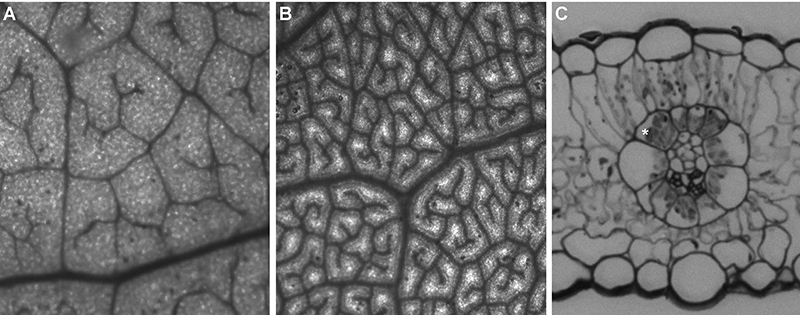Hunting the factors that rule C4 anatomy
C4 photosynthesis is a specialised form of photosynthesis that is distinguished from regular C3 photosynthesis by the presence of a CO2 supercharging mechanism that enables plants to fix CO2 more efficiently. Due to this, C4 plants require less water, grow faster and can cope better with high temperatures. C4 plant leaves show a very distinct anatomy. At the heart of C4 photosynthesis lies a biochemical circuit that concentrates CO2 in the cells surrounding leaf vasculature. In order to keep it operational, a specialized leaf anatomy is required. Therefore, the density of vascular network that distributes water throughout the leaf is increased. The cells adjacent to the vasculature, the so called bundle sheath cells, are enlarged and contain high numbers of chloroplasts (fig.1).

While the biochemical part of C4 photosynthesis has been detailed analysis, the genes in control of the altered anatomy are largely unknown. Therefore, we analyze the development of leafs from closely related C3 and C4 species. We use leaves of different ages to create a developmental gradient starting with initiating and ending with fully developed leaves. Next generation sequencing of transcriptomes gives us a view on the expression levels of all genes. Combined with information on tissue structure and cell sizes, we try to determine the genetic networks that are altered.
Contribution by Thomas Wrobel, Institute of Plant Biochemistry, Heinrich Heine University
Planter’s Punch
Under the heading Planter’s Punch we present each month one special aspect of the CEPLAS research programme. All contributions are prepared by our young researchers.